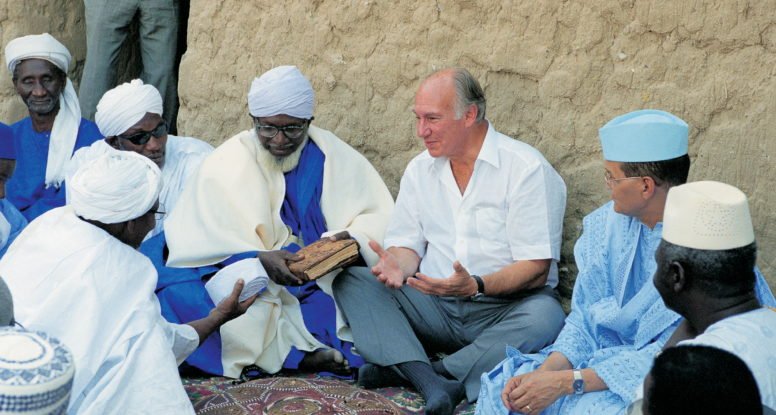The Aga Khan Development Network (AKDN) turns 60 years old today. This is one of the largest global development organizations in the world, though it is less well-known in the United States than comparatively sized groups like Oxfam. It was founded, and is still directed by the Aga Khan, the spiritual leader of 15 million Shia Ismaili muslims who commemorates his 60th anniversary of leading this group.
AKDN is well known in development circles for pioneering community driven development. This is a kind of de-centralized approach to global development projects that is becoming increasingly in vogue among aid and development organizations.
Here’s how the World Bank describes the Community of Development approach
Community-Driven Development (CDD) programs operate on the principles of transparency, participation, local empowerment, demand-responsiveness, greater downward accountability, and enhanced local capacity.
Experience has shown that when given clear and transparent rules, access to information, appropriate capacity, and financial support, poor men and women can effectively organize to identify community priorities and address local problems by working in partnership with local governments and other supportive institutions to build small-scale infrastructure and deliver basic services.
The World Bank recognizes that CDD approaches and actions are important elements of an effective poverty reduction and sustainable development strategy. The Bank has supported CDD across a range of low to middle income, and conflict-affected, countries to respond to a variety of urgent needs, including water supply and sanitation, school and health post construction, nutrition programs for mothers and infants, rural access roads, and support for micro-enterprises.
AKDN has been at this for years. In DAWNS Digest, Tom Murphy describes how AKDN’s approach to community driven development works in practice.
AKDN supports more than 40,000 civil society organizations that are comprised of 1.3 million people. The Aga Khan believes that a robust civil society is an effective tool for enabling pluralism and improving quality of life. It happens when there is downward accountability, meaning government and leaders answer to citizens.
The Aga Khan does not prescribe specific solutions to the problem of poverty. He rejects the top-down approach to development where outsiders or people in power make decisions for people living in poverty. He has directed AKDN staff and volunteers to be guided by the notion that citizens should determine the future of their own country, not outsiders, expats or national elites.
“The community is absolutely shaping what we do and that leads to a more meaningful and sustainable development work,” Michael Kocher, General Manager of the Aga Khan Foundation, said in an interview.
This community-driven economic model is gaining wider acceptance in the broader global development community.
“The end of poverty will come as a result of homegrown political and economic reforms (which are already happening in many poor countries), not through outside aid.” New York University economist Bill Easterly argued in an OpEd for the L.A. Times. “The biggest hope for the world’s poor nations is not Bono, it is the citizens of poor nations themselves.”
In Afghanistan, the AKDN mobilized more than $1 billion since 2002 to support development in the wake of the U.S.-led invasion of the country. The money went to projects ranging from the completion of nearly 600 infrastructure projects and the founding of three resource centers for girls. It supports 150 health centers and clinics in Badakhshan province, manages the main government provincial hospitals in Bamyan and Badakhshan and supports three midwifery schools.
Most programs focused on civil society and enabling accountability. It is a recognition that answers come from the bottom, not the top.
The Aga Khan Foundation supported 29 public audits in Afghanistan across 25 districts in 2015. It simultaneously organized public forums and town halls where governors spoke directly to their constituents. Social report cards are utilized to appraise district hospitals. All of the programs act to provide feedback to leaders and empower communities to demand what they need.
“We practice community-driven development which if done well means that you are inherently accountable to the community because they are the ones leading the work. If you are doing something wrong then you are going to hear about it,” says Kocher.
If the Sustainable Development Goals are going to be met on time by 2030, it will largely be because aid and development organizations around the world come around to embrace the kind of locally-driven approach to fighting poverty around the world that AKDN has pioneered.
